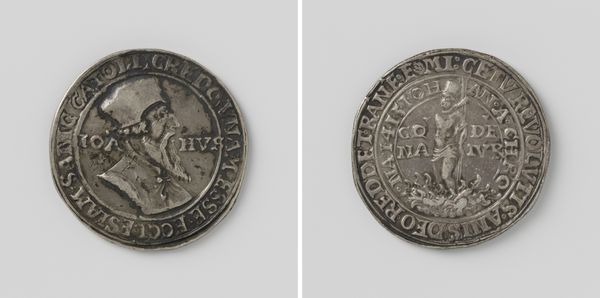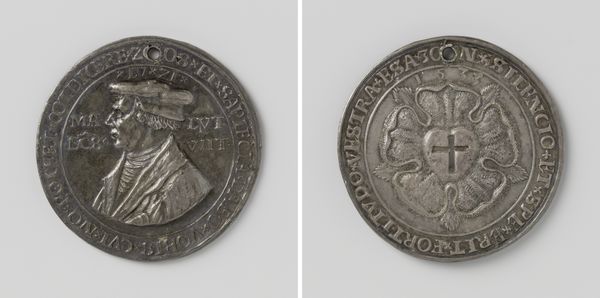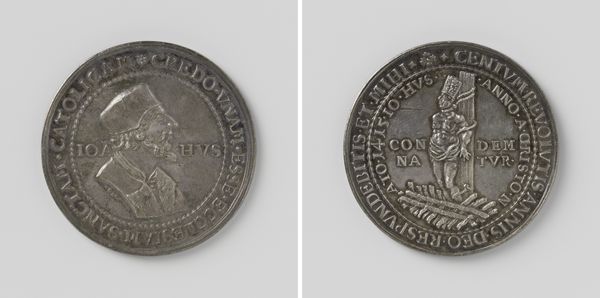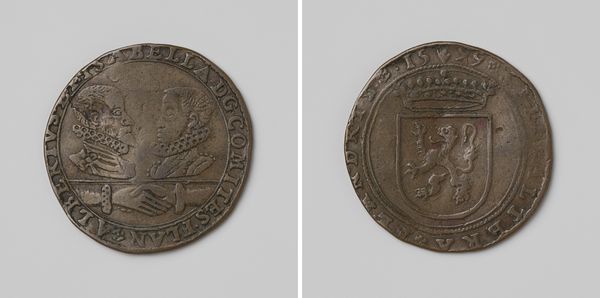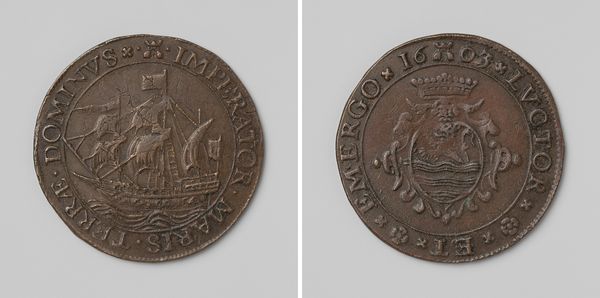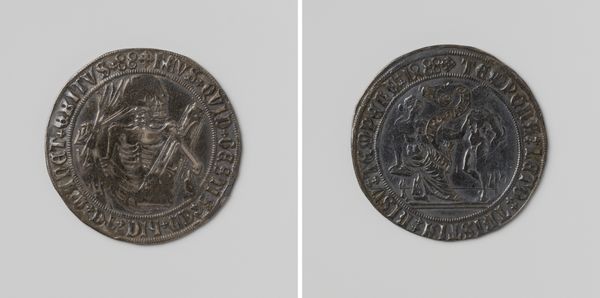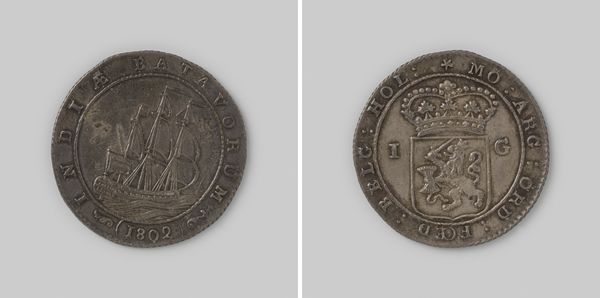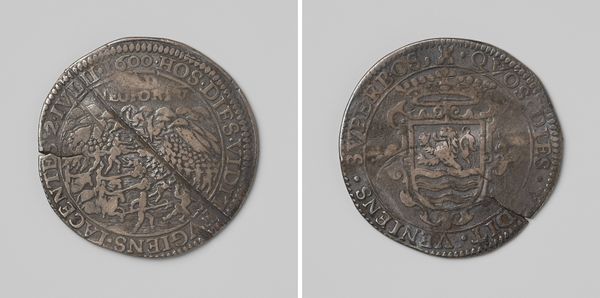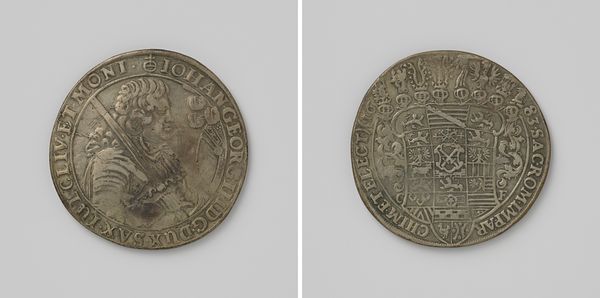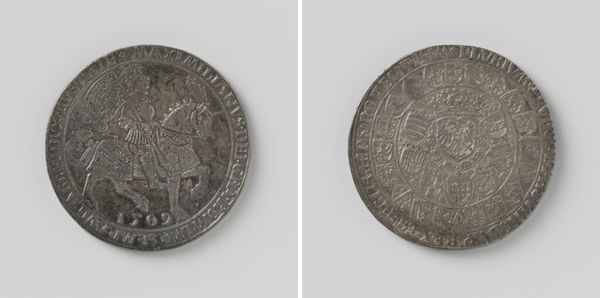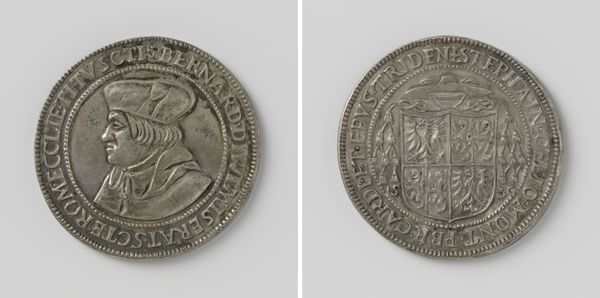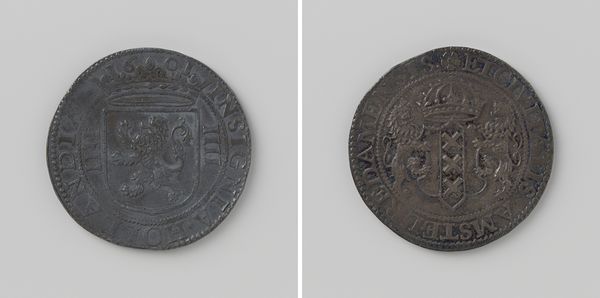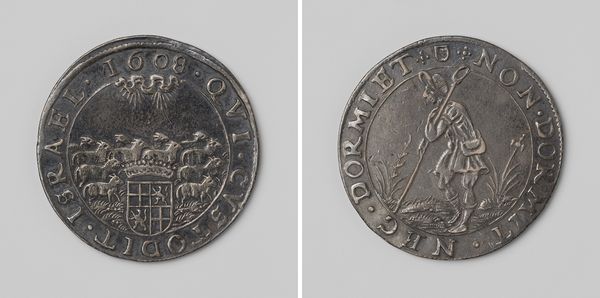
metal, sculpture, engraving
#
portrait
#
3d sculpting
#
high-renaissance
#
decorative element
#
metal
#
old engraving style
#
11_renaissance
#
3d shape
#
sculpture
#
history-painting
#
engraving
Dimensions: diameter 5.5 cm, weight 490 gr
Copyright: Rijks Museum: Open Domain
Curator: The "In Honor of Charles V," made in 1533, presents a fascinating case study of power, production, and portraiture during the Renaissance. Editor: It feels...cold. That’s the immediate impression I get. Imposing and deliberately austere. The grey metallic surface reinforces the ruler’s untouchable status, his control. Curator: Exactly! We need to remember that these medals weren’t just images; they were material objects manufactured in a specific way to transmit power. Look at the level of detail achieved through engraving and sculpting of the metal. It speaks to highly skilled labor and the technology available at the time. Consider also, the act of minting coins, a sovereign right closely guarded and controlled. Editor: It's not just a cold aesthetic; it's calculated propaganda. Placing Charles V within the tradition of great rulers, maybe even casting him as divinely ordained. The imperial eagle, the pillars – it's all about consolidating his image amidst political tensions. Curator: Right. The deliberate use of classical imagery highlights Charles V's ambition to present his reign as a continuation of the Roman Empire. The material form also emphasizes how this manufactured image could be widely distributed across his territories. How could this reach more commoners in the past? Editor: I keep thinking about the social and political contexts in Europe during the Renaissance. These portraits were certainly powerful but also carefully crafted and staged fictions, given ongoing religious conflict and burgeoning dissent in the various corners of the Empire. Were they effective then? Curator: And how! Their durability! Metal ensures longevity, that these messages would endure. It becomes a powerful medium for political communication but it must have required vast quantities of materials. What of the colonial connection and acquisition of precious metals at the time? Editor: Exactly. You can’t divorce these seemingly objective, stoic images from the context of exploitation, wealth accumulation, and cultural dominance that fueled artistic production. It reminds us to investigate the hands, beliefs, and policies that produced this propaganda. Curator: Exploring its production reveals how Renaissance power wasn't just a matter of brute force. But reliant on intricate networks of material extraction, labor, and the crafting of a very convincing visual image. Editor: Considering how deeply rooted portraits like this are in ideology makes me aware of how we consume and re-interpret them centuries later, given shifting norms, different notions of politics. And given new struggles around labor rights and colonialism, there are fresh interpretations to draw.
Comments
No comments
Be the first to comment and join the conversation on the ultimate creative platform.
